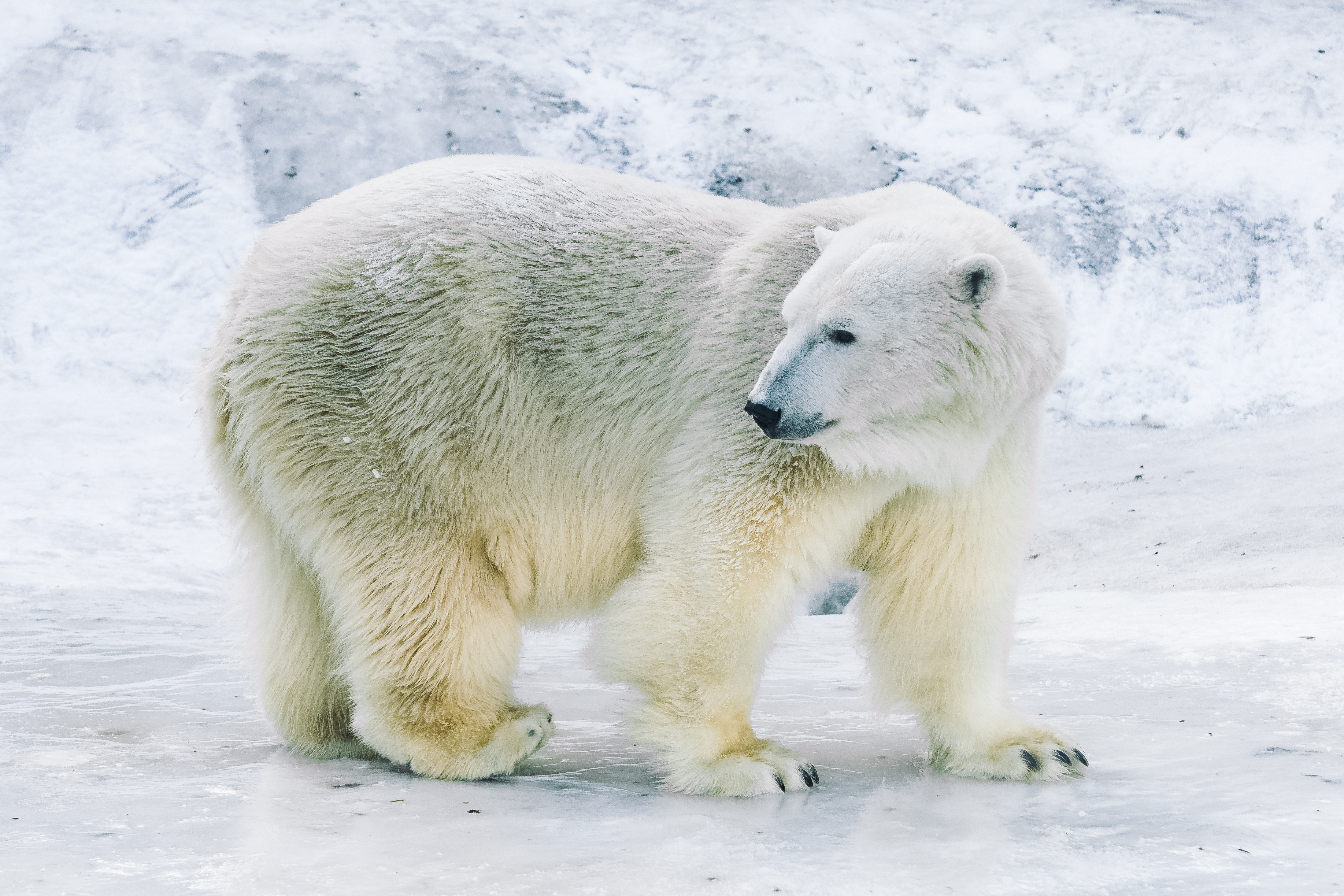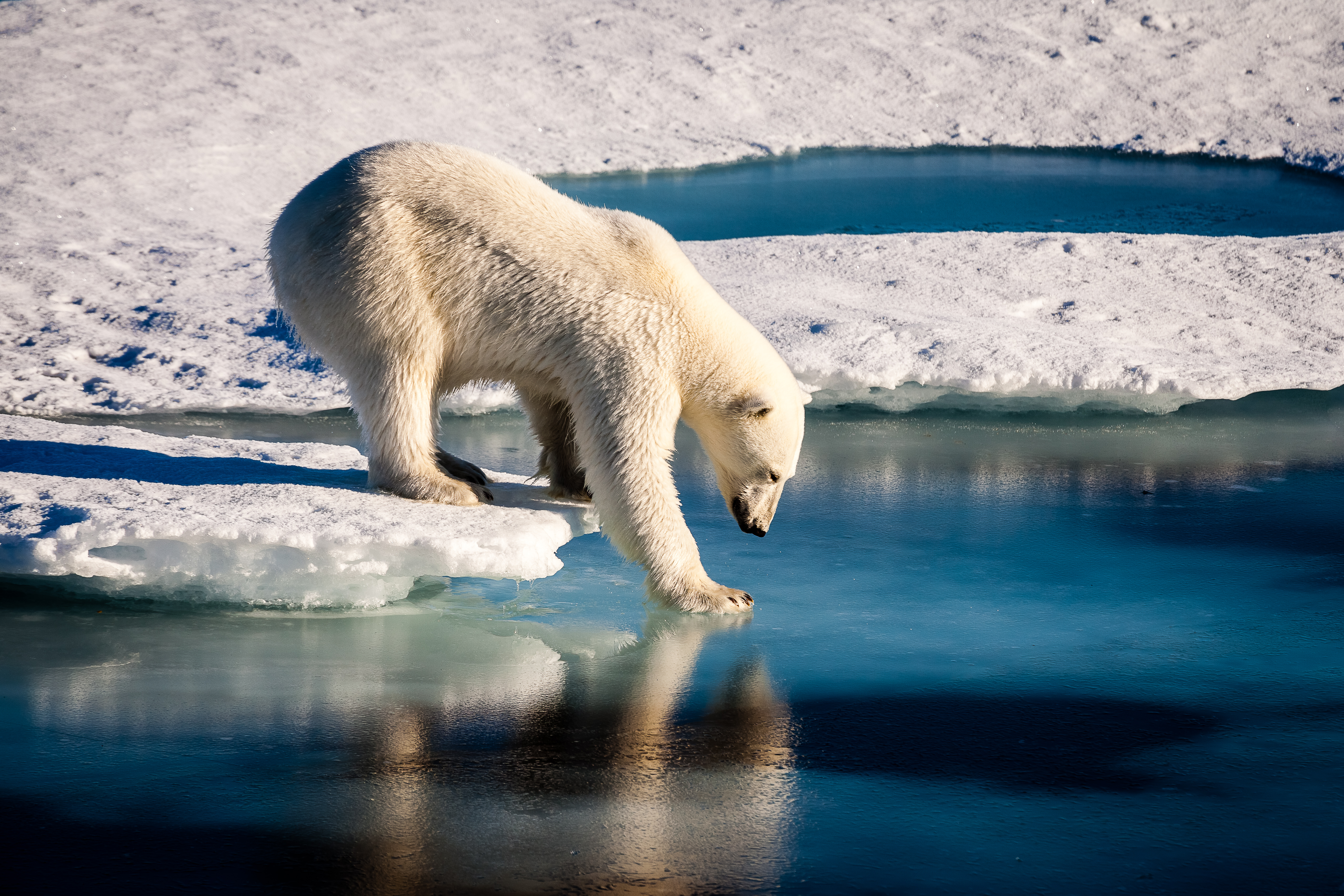International Polar Bear Day – 8 facts about the world’s largest land predator
Paws for thought – some of these are bear-ly believable.
In one sense, you’d be forgiven for not knowing much about polar bears. Increasingly rare, exceptionally dangerous to approach, and confined wholly to the ultra-hostile Arctic north, they don’t crop up much in the day-to-day.
But as the ice caps melt and their bear populations continue their descent into danger, there’s no better time to ramp up your polar bear awareness. Here’s a few nuggets of trivia about one of Earth’s most enigmatic animals…
1. Polar bears aren’t white

The black bear is an entirely separate species to the polar bear, but, technically, polar bears are black bears too. Beneath their thick, silky coat, polar bears have dark-coloured skin – optimal for absorbing rare rays of Arctic sunshine – and their snowy camouflage comes from fur and fur alone.
2. Polar bears are much, much faster than you

Do not try to outpace a polar bear. To run the first four-minute mile, Roger Bannister averaged a speed of 15mph, and the average polar bear has a top speed of almost 25mph. In his 100m world record, Usain Bolt topped out at 27.8mph, between metres 60 and 80. He could just outrun a polar bear – for about ten seconds.
3. Polar bears are more worried about heat than cold

Despite sleeping in the snow and swimming in glacial seas, polar bears have evolved such staggeringly strong defences against the cold that their main concern is overheating during exercise. In fact, the bears are so well insulated that even infrared cameras can only pick them up by their eyes and noses.
4. Polar bears are classified as marine mammals

Despite their sprinting prowess, polar bears are classified as creatures of the sea, alongside whales, dolphins, and manatees. They may sound like strange bedfellows, but according to WWF, polar bears spend most of their lives on sea ice, and rely entirely on oceanic ecosystems. Consider their Latin name, ursus maritimus – quite literally, ‘ocean bear’.
5. Polar bears can swim for more than a week at a time

Masters of land and sea, polar bears possess swimming abilities that make Michael Phelps look like a cat that fell into the bath. In 2011, a study by U.S. Geological Survey clocked a 426 mile ultra-marathon by a female polar bear across the Beaufort Sea, lasting nine days and costing roughly 22% of her body weight.
6. When pushed, polar bears will eat anything
Under normal circumstances, polar bears are far from fussy, and if seal is not forthcoming, they’ll eat birds’ eggs, geese, small mammals and even plants. But when sustenance is scarce, bears head for nearby rubbish dumps, where they’ll chomp anything from plastic bags to batteries while foraging for food. In the mid-2000s, the Canadian city of Churchill had to move its tip to a sealed warehouse, nicknamed ‘the Alcatraz of garbage’, as hordes of hungry bears were flocking to its foul-smelling buffet.
7. There’s such thing as a polar-grizzly bear hybrid, and it’s called a pizzly
We wish we were making this up. In 2006, a Canadian hunter shot a nightmarishly large, long-clawed bear with splotches of white and brown fur, and a DNA test yielded both grizzly and polar parentage. Long a reality in captivity, it was the first time the so-called ‘pizzly bear’ had ever been recorded in the wild.
The DNA results were good news for the hunter, whose permit only extended to polar bears. If the specimen had not returned polar genes, he faced a possible fine and a stint in jail.
8. Polar bears and penguins live thousands of miles away from each other

OK, you may have pegged this, but it’s remarkable how widespread this misconception is, given the two species have never crossed swords in the wild. While polar bears wander the ice floes of the Arctic, penguins are confined to the southern hemisphere – quite literally poles apart. Unless you’re reading this in a polar research station, you’re probably far closer to bears and penguins than they are to each other.
The Press Association
Latest posts by The Press Association (see all)
- World Penguin Day: Test your knowledge with our penguin-themed quiz - April 23, 2024
- Kate’s new photo of Louis released to celebrate prince’s sixth birthday - April 23, 2024
- Alan Titchmarsh: Slugs are never going to be my friends - April 23, 2024
- Prince Louis celebrates sixth birthday - April 23, 2024
- Special episode of Planet Earth III to be narrated by schoolchildren - April 22, 2024






















